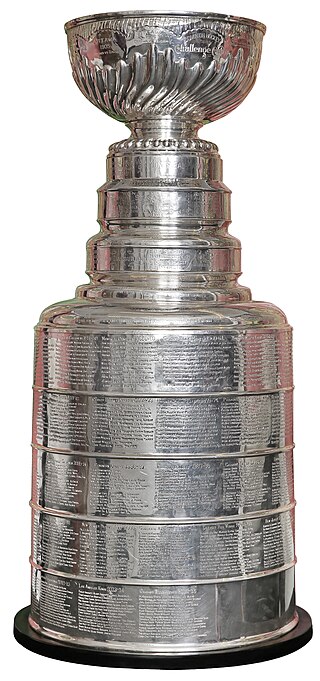
The Stanley Cup is the championship trophy awarded annually to the National Hockey League (NHL) playoff champion. It is the oldest existing trophy to be awarded to a professional sports franchise in North America, and the International Ice Hockey Federation (IIHF) considers it to be one of the "most important championships available to the sport". The trophy was commissioned in 1892 as the Dominion Hockey Challenge Cup and is named after Lord Stanley of Preston, the Governor General of Canada, who donated it as an award to Canada's top-ranking amateur ice hockey club. The entire Stanley family supported the sport, the sons and daughters all playing and promoting the game. The first Cup was awarded in 1893 to Montreal Hockey Club, and winners from 1893 to 1914 were determined by challenge games and league play. Professional teams first became eligible to challenge for the Stanley Cup in 1906. In 1915, the National Hockey Association (NHA) and the Pacific Coast Hockey Association (PCHA), the two main professional ice hockey organizations, reached a gentlemen's agreement in which their respective champions would face each other annually for the Stanley Cup. It was established as the de facto championship trophy of the NHL in 1926 and then the de jure NHL championship prize in 1947.

The Quebec Bulldogs were a men's senior-level ice hockey team based in Quebec City. The team was officially known as the Quebec Hockey Club, and later as the Quebec Athletic Club. One of the first organized ice hockey clubs, the club debuted in 1878 with the opening of the Quebec Skating Rink. The club continued as an amateur team through various leagues, eventually becoming professional in 1908. The club would play in the National Hockey Association and the National Hockey League. In 1920, the team moved to Hamilton, Ontario and became the Hamilton Tigers.
The Canadian Amateur Hockey League (CAHL) was an early men's amateur hockey league founded in 1898, replacing the organization that was formerly the Amateur Hockey Association of Canada (AHAC) before the 1898–99 season. The league existed for seven seasons, folding in 1905 and was itself replaced by the Eastern Canada Amateur Hockey Association (ECAHA). Formed because of a dispute between teams of the AHAC, it further developed the sport in its transition to professional, with a growing focus on revenues. The CAHL itself would fold over a dispute, leading to the new ECAHA league.

Montreal Amateur Athletic Association is Canada's oldest athletic association, located in Montreal, Quebec. It was renamed as the Club Sportif MAA or just MAA in 1999 after a brush with bankruptcy, but is still widely known as the MAAA. In the late 19th and early 20th centuries, the MAA was one of the most important sporting institutions in Canada, and North America, with affiliated teams winning ice hockey's Stanley Cup and Canadian football's Grey Cup.

The Montreal Crystals were an ice hockey team based in Montreal, Quebec, Canada that existed from 1884 to 1895. One of the first established ice hockey teams, the Crystals played various challenges against other clubs in the early days of ice hockey competition. They won the Canadian championship in 1886, defeating Quebec, which withdrew due to numerous injuries in the final game. Later that year the Crystals helped to found the Amateur Hockey Association of Canada where they played the first five seasons. The club won the championship in 1887, defeating the Montreal Victorias in the last challenge of the season. The team played further challenges for the championship from 1888 to 1891. For the 1890 season, the club became known as the Montreal Dominions. In 1891 they became known as the Montreal Crescents. The team sat out the 1892 season. In 1893 they returned to the league and returned to their original name of Montreal Crystals.

The Victoria Hockey Club of Montreal, Quebec, Canada was an early men's amateur ice hockey club. Its date of origin is ascribed to either 1874, 1877 or 1881, making it either the first or second organized ice hockey club after McGill University. The club played at its own rink, the Victoria Skating Rink in Montreal. The club was winners of the Stanley Cup in 1895 and held it until 1899, except for a period in 1896. The club remained amateur, splitting from the ranks of teams turned professional in 1908. The club was the first winner of the Allan Cup and continued to play until 1939, when it folded after its 65th season. The club often also fielded junior and intermediate teams.

Michael Grant was a Canadian ice hockey player. He played nine seasons of senior amateur hockey between 1894 and 1902 for the Montreal Victorias and Montreal Shamrocks. Grant was a member of the Victorias squad that won or retained possession of the Stanley Cup five times between 1895 and 1899 during the trophy's challenge era. Grant played cover-point and was known for his speed and skating ability. He is regarded as one of the first defenceman to rush forward and with the puck. He was inducted into the Hockey Hall of Fame in 1950.
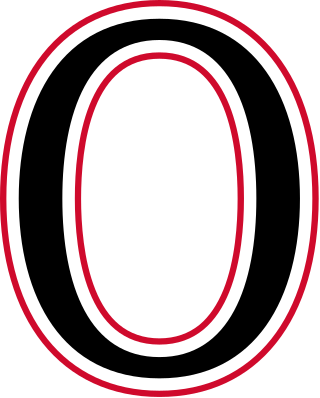
The Ottawa Senators were an ice hockey team based in Ottawa, which existed from 1883 to 1954. The club was the first hockey club in Ontario, a founding member of the National Hockey League (NHL) and played in the NHL from 1917 until 1934. The club, which was officially the Ottawa Hockey Club, was known by several nicknames, including the Generals in the 1890s, the Silver Seven from 1903 to 1907 and the Senators dating from 1908.

The Victoria Skating Rink was an indoor ice skating rink located in Montreal, Quebec, Canada. Opened in 1862, it was described at the start of the twentieth century to be "one of the finest covered rinks in the world". The building was used during winter seasons for pleasure skating, ice hockey and skating sports on a natural ice rink. In summer months, the building was used for various events, including musical performances and horticultural shows. It was the first building in Canada to be electrified.
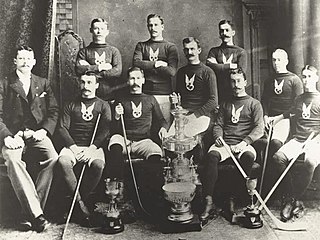
The 1893 Amateur Hockey Association of Canada season lasted from January 7 until March 17. The Montreal Hockey Club defeated the Crystals 2-1 to claim the league and Canadian champion for the sixth season in a row and was awarded the new Stanley Cup without any competition by virtue of their status as AHAC champion.
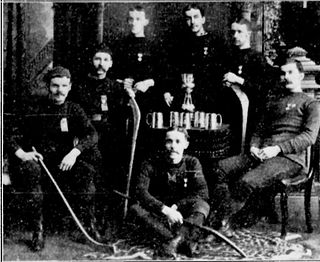
The Montreal Hockey Club of Montreal, Quebec, Canada was a senior-level men's amateur ice hockey club, organized in 1884. They were affiliated with the Montreal Amateur Athletic Association (MAAA) and used the MAAA 'winged wheel' logo. The team was the first to win the Stanley Cup, in 1893, and subsequently refused the cup over a dispute with the Montreal Amateur Athletic Association. The club is variously known as 'Montreals', 'Montreal AAA' and 'Winged wheel' in literature.
The Ottawa City Hockey League (OCHL) was an amateur ice hockey league with junior, intermediate and senior level men's teams in Ottawa, Canada. Founded in 1890 by the local Ottawa Hockey Association, the OCHL was created to organize play within the city of Ottawa. It is considered the second ice hockey league to form in Canada.
The 1887 AHAC season was the inaugural season of the Amateur Hockey Association of Canada. Play was in challenges. The Montreal Crystals defeated the Montreal Victorias to win the final challenge of the season to claim the Canadian championship and the first league championship.
Ottawa ice hockey clubs date back to the first decade of recorded organized ice hockey play. The men's senior-level Ottawa Hockey Club is known to have played in a Canadian championship in 1884. Today, Ottawa hockey clubs are represented in all age brackets, in both men's and women's, in amateur and professional.
The 1891–92 Ottawa Hockey Club season was the club's seventh season of play. The Club would play in the Amateur Hockey Association of Canada, the Ontario Hockey Association (OHA) and inter-city play. Ottawa would win their second straight OHA championship. Ottawa would also win the AHAC championship on January 10, and hold it until March 7.
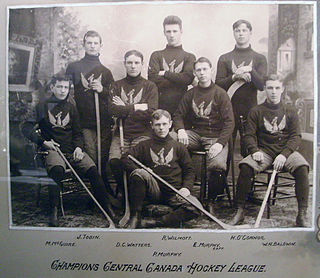
The Ottawa Capitals were the competing clubs of the Capital Amateur Athletic Association (CAAA) of Ottawa, Ontario, Canada. The Association competed in ice hockey, lacrosse and other athletics.
The Stanley Cup, then named the Dominion Hockey Challenge Cup, was first awarded in 1893 to the Montreal Hockey Club of the Amateur Hockey Association of Canada (AHAC) at the end of the 1893 AHAC season for having placed first in the standings with a 7–1–0 record. The season ended on March 17, but Montreal was officially presented with the trophy on May 15.

The Lord Stanley's Gift Monument is a monument in Ottawa, Ontario, Canada. It commemorates the donation of the Stanley Cup ice hockey championship trophy by Canada's Governor-General the Lord Stanley of Preston in 1893. It is located on the eastern end of the Sparks Street Mall. It was constructed at the culmination of a public campaign to commemorate the donation of the trophy.















